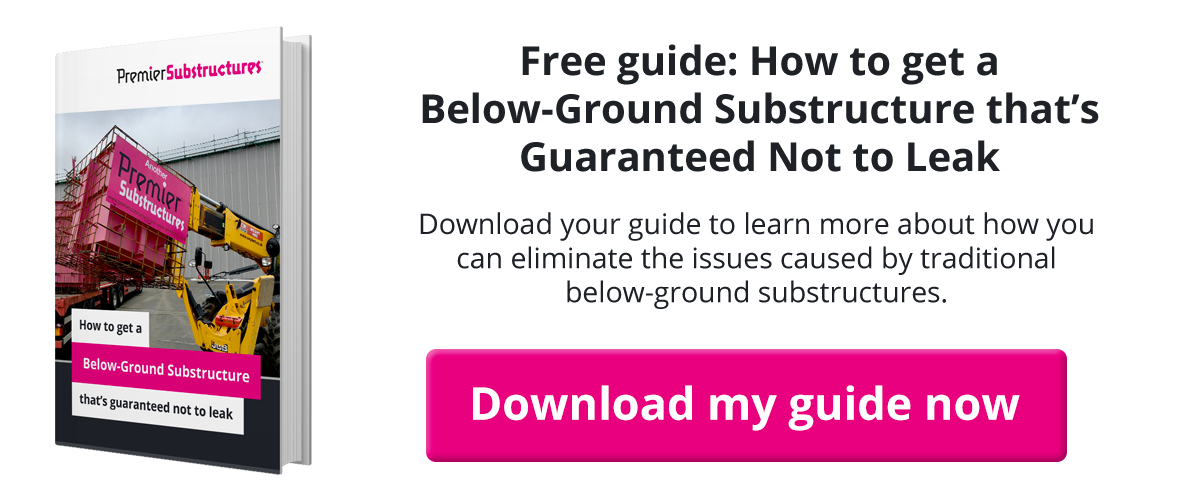Are you looking for a viable alternative to in situ concrete for your construction project?
Below-ground construction methods can be risky, and traditional in situ concrete can be particularly challenging due to various factors.
For example, the environment surrounding a site can be tricky, weather conditions can get in the way and cause delays, and then there’s the fact that operatives must enter the excavation in order to complete the works.
Depending on the site, it can also take up a lot of room, for a long period of time, in a specific area. Therefore, it can hinder other construction works due to start, until the in situ substructure has been built.
Add to that the logistics of moving the materials, and general site constraints, and you have several elements that can all impact the quality of the build and the risk of going over-programme.
So, what are the alternatives? Well, as a specialist subcontractor, I’m going to tell you about two other methods of below-ground construction – both of which are off-site methods.
TIP: In situ is still best suited to your project if your substructure needs to cover a large area – for instance, a super basement.
1. Precast concrete
The most commonly-known off-site method of below-ground construction, precast concrete is a method you may even have used yourself. However, that doesn’t mean it’s devoid of any risk, and construction teams can sometimes encounter quality issues and cracking.
The reason? Well, the slab of a precast concrete substructure often must be poured in situ; and only the side walls are preconstructed off-site. This can mean the risk of cracks, leaks and water ingress over time between joints of the panels, and the in situ concrete slab.
There’s also the question of who covers the issue if there is a leak and one contractor constructed the in situ slab and the other constructed and installed the sidewalls.
Despite this, precast can still often be a better alternative to in situ concrete – depending on your project, as it’s usually best suited to smaller substructures. However, it’s still not a foolproof alternative.
2. Prefabricated steel
Now, this is an innovative and incredibly effective below-ground construction method you potentially haven’t heard of yet. Prefabricated steel substructures are manufactured entirely out of steel in a highly controlled environment via an off-site facility.
They are built to match your exact specifications, and completely remove the risk from a project. Cracking and leaks become a thing of the past; think of it as being similar to the hull of a boat. According to an independent report, they can even last over 100 years in the ground.
The manufacturing process? It involves the constructing of steel plates, and the necessary strengthening to build substructures in an off-site facility – not forgetting the constant monitoring. They can also be built to much tighter tolerances (+-3mm).
Your completed prefabricated steel substructure is then transported to the site, before being fixed into position, before being backfilled with concrete between the earth and the substructure. This reduces the time spent on-site by around 70 – 80% – however, a lead time is required.
TIP: Want to read more about steel prefabrication? Check out my recent blog: ‘What is Steel Prefabrication Below-Ground and How Does it Work?’.
Advice from a specialist subcontractor
If you’re looking for the best alternative to in situ concrete for your construction project, I’d recommend speaking to an engineer or specialist subcontractor who specialises in prefabricated steel, so they can tell you more about your options and provide free, impartial advice.
Over the years, we’ve helped clients with projects that just couldn’t be completed using in situ or precast concrete; including delicate and intricately shaped substructures which simply wouldn’t work with any other methods.
Conclusion
Thanks for reading. I hope I’ve been able to shed a little more light on the subject of alternatives to in situ concrete. I’ve compared both precast concrete and prefabricated steel above, to give you a better understanding of which below-ground construction best suits your project.
Do you have any questions about in situ alternatives that I haven’t covered above? If so, feel free to leave a comment below. I’d be happy to help!

